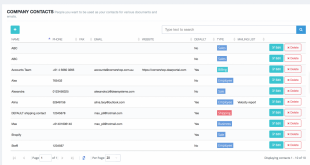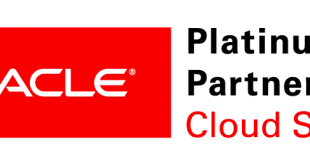Choosing the right ERP system is a critical decision for businesses seeking to streamline operations, enhance efficiency, and gain a competitive edge. This comprehensive guide will delve into the intricacies of ERP selection, providing valuable insights and practical guidance to help you navigate the complexities of this transformative technology.
By understanding the fundamentals of ERP systems, assessing your business needs, evaluating different solutions, and selecting the right vendor, you can unlock the full potential of ERP and drive your organization towards success.
ERP System Overview
An Enterprise Resource Planning (ERP) system is a comprehensive software suite that integrates various business processes into a unified system. It provides a centralized platform for managing and automating core business functions, such as finance, supply chain, manufacturing, human resources, and customer relationship management.
ERP systems are designed to streamline operations, improve efficiency, and enhance collaboration across different departments. They offer a range of modules, each focusing on a specific functional area, such as:
Key Modules and Functionalities
- Financial Management:Tracks financial transactions, manages accounts payable and receivable, and provides financial reporting capabilities.
- Supply Chain Management:Manages the flow of goods and services, including inventory control, purchasing, and logistics.
- Manufacturing:Automates production processes, manages production schedules, and tracks work-in-progress.
- Human Resources:Manages employee data, processes payroll, and handles benefits administration.
- Customer Relationship Management (CRM):Tracks customer interactions, manages sales pipelines, and provides customer support.
Business Needs Assessment

A comprehensive assessment of business requirements is crucial before embarking on an ERP system selection journey. Understanding the specific needs and objectives of the organization ensures that the chosen system aligns with its strategic goals and operational processes.
To determine the specific business needs, a series of questions should be considered:
Identifying Business Requirements
- What are the key business processes that need to be supported by the ERP system?
- What are the specific functional requirements for each business process?
- What are the current challenges and pain points in the existing business processes?
- What are the future business goals and objectives that the ERP system should support?
- What are the industry-specific requirements and regulations that the ERP system must comply with?
- What is the budget allocated for the ERP system implementation?
- What is the timeline for the ERP system implementation?
ERP System Evaluation

ERP system evaluation is a critical step in selecting the right system for your business. It involves assessing the key factors that align with your business needs and evaluating different systems based on their features, cost, and vendor support.
Key Factors to Consider
When evaluating ERP systems, consider the following key factors:
-
-*Business requirements
Identify the specific business processes and functions that the ERP system should support.
-*Scalability
Ensure the system can accommodate future growth and expansion of your business.
-*Flexibility
Choose a system that can adapt to changing business needs and industry regulations.
-*Cost
Determine the total cost of ownership, including software licensing, implementation, maintenance, and support.
-*Vendor support
Evaluate the vendor’s reputation, industry expertise, and level of support they provide.
Comparison Table
To facilitate the evaluation process, create a comparison table that lists different ERP systems and their key features, cost, and vendor support. This table will help you identify the systems that best meet your specific requirements.| ERP System | Features | Cost | Vendor Support ||—|—|—|—|| SAP | Extensive functionality, global reach | High | Comprehensive support network || Oracle NetSuite | Cloud-based, scalable | Mid-range | Strong customer support || Microsoft Dynamics 365 | Integrated with Microsoft products, customizable | Low to mid-range | Reliable support from Microsoft || Epicor | Industry-specific solutions, flexible | Mid-range | Dedicated industry expertise || Sage Intacct | Cloud-based, affordable | Low | Excellent customer service |
Vendor Selection
Vendor selection is a critical step in ERP implementation. The right vendor can provide the software, support, and expertise you need to succeed. The wrong vendor can lead to a costly and frustrating experience.
Here are some tips for selecting an ERP vendor:
Assess Vendor Capabilities
- Start by defining your business needs. What are the most important features and functions you need in an ERP system?
- Once you have a clear understanding of your needs, start researching potential vendors. Look for vendors that have experience in your industry and that offer a solution that meets your specific requirements.
- Request demos and proposals from multiple vendors. This will give you a chance to compare their products and services and see how they fit your business.
Check References
- Once you have narrowed down your list of potential vendors, check references. Talk to other businesses that have implemented the vendor’s software. Ask them about their experience with the vendor and the software.
- References can provide valuable insights into the vendor’s strengths and weaknesses.
Implementation and Customization
Implementing an ERP system involves several key steps:
-
-*Planning and Preparation
Define project scope, assemble a project team, and establish a timeline.
-*Data Migration
Transfer data from existing systems to the new ERP system, ensuring data integrity.
-*Configuration and Customization
Tailor the ERP system to meet specific business needs, including workflow automation and user interface adjustments.
-*Testing and Training
Conduct thorough testing to ensure functionality and train users on the new system.
-*Go-Live
Launch the ERP system and monitor its performance, providing support to users.
Customization is crucial for successful ERP implementation. By tailoring the system to specific business processes, organizations can:
-
-*Enhance efficiency
Automate tasks, streamline workflows, and reduce manual processes.
-*Improve decision-making
Access real-time data and generate reports to support informed decision-making.
-*Increase productivity
Enable users to access information and perform tasks more quickly and effectively.
-*Gain competitive advantage
Differentiate from competitors by implementing tailored solutions that meet unique business needs.
Benefits of ERP Systems
Implementing an ERP system can bring numerous benefits to organizations. These benefits can be categorized into improved efficiency, cost savings, and enhanced decision-making.
Improved Efficiency
- Streamlined processes: ERP systems automate many manual tasks, eliminating the need for duplicate data entry and reducing the risk of errors.
- Increased productivity: By providing real-time data and insights, ERP systems enable employees to make informed decisions and work more efficiently.
- Enhanced collaboration: ERP systems provide a central platform for all departments to access and share information, fostering collaboration and reducing communication barriers.
Cost Savings
- Reduced operating expenses: ERP systems can reduce costs associated with labor, inventory management, and supply chain management.
- Improved inventory management: ERP systems provide visibility into inventory levels, reducing the risk of overstocking or understocking.
- Negotiated discounts: ERP systems can help organizations negotiate better deals with suppliers by providing real-time data on purchasing patterns.
Enhanced Decision-Making, Choosing the right erp system
- Improved data accuracy: ERP systems provide a single source of truth for all business data, ensuring that decisions are based on accurate and up-to-date information.
- Real-time insights: ERP systems provide real-time visibility into key performance indicators (KPIs), enabling managers to make informed decisions based on the latest data.
- Predictive analytics: Some ERP systems offer predictive analytics capabilities, allowing organizations to anticipate future trends and make proactive decisions.
Challenges of ERP Implementation
Implementing an ERP system can be a complex and challenging endeavor. Organizations may encounter various obstacles during the implementation process, which can impact the project’s timeline, budget, and overall success.
To ensure a successful ERP implementation, it is crucial to anticipate potential challenges and develop strategies to mitigate risks.
Data Integration and Migration
- Integrating data from multiple legacy systems into the new ERP system can be a complex and time-consuming task.
- Data inconsistencies, data duplication, and data loss can occur during the migration process.
Process Disruption
- ERP implementation can disrupt existing business processes, leading to operational inefficiencies and reduced productivity.
- Employees may resist change and require extensive training to adapt to the new system.
Cost Overruns
- ERP implementation projects can be expensive, and costs can easily exceed the initial budget.
- Unexpected expenses, such as additional customization or data migration costs, can arise during the implementation process.
Lack of Executive Support
- Lack of support from top management can hinder the successful implementation of an ERP system.
- Executive sponsorship is essential to ensure that the project has the necessary resources and authority to succeed.
Final Conclusion: Choosing The Right Erp System
In conclusion, choosing the right ERP system is a strategic investment that can revolutionize your business operations. By following the principles Artikeld in this guide, you can make informed decisions, mitigate risks, and reap the rewards of a seamlessly integrated ERP system.
Embrace the transformative power of ERP and empower your organization to thrive in the ever-evolving business landscape.
 Bussines News Daily
Bussines News Daily



